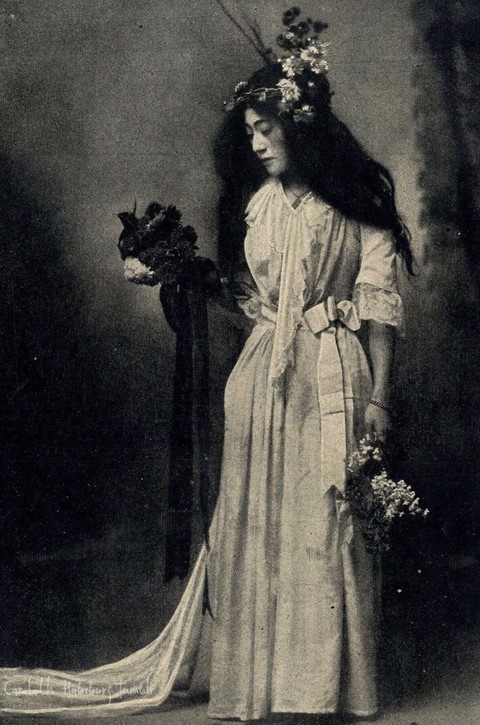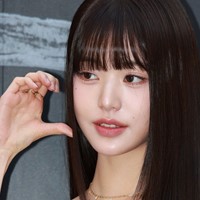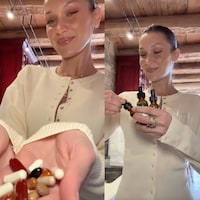From Picasso to Guerlain, Sada Yacco's influence was felt around the world
It might seem like our obsession with beauty has never been greater, but looking to the past tells a different story. Making Up The Past is a column looking at great women from history and how they used cosmetics to shape their identities, from ancient queens to modern artists.
“America taught me that naturalness was the foremost art,” actress and geisha Sada Yacco said in a 1906 interview for New York’s Dramatic Mirror, upon returning to her native Japan following a three-year odyssey travelling across the States and Europe. “In Japan we make up our faces like a picture: drawing little slender eyebrows, reddening our lips, powdering our faces thickly. American critics said they were more like the faces of the dead rather than living women. In a way, they are right.”
Sada Yacco spent less than three years touring outside of Japan, yet the impact she made on Western performance, dance and cosmetics were seismic. “I owe everything to America,” she continued. “That trip was my education.” But it was an even greater education for the leading American and European actresses and choreographers of the time: everyone from Sarah Bernhardt to Ellen Terry to Isadora Duncan were awed and inspired by her distinctive blend of the Japanese traditions of nō and kabuki with Western melodrama, as well as her legendary beauty and meticulous make-up skills.
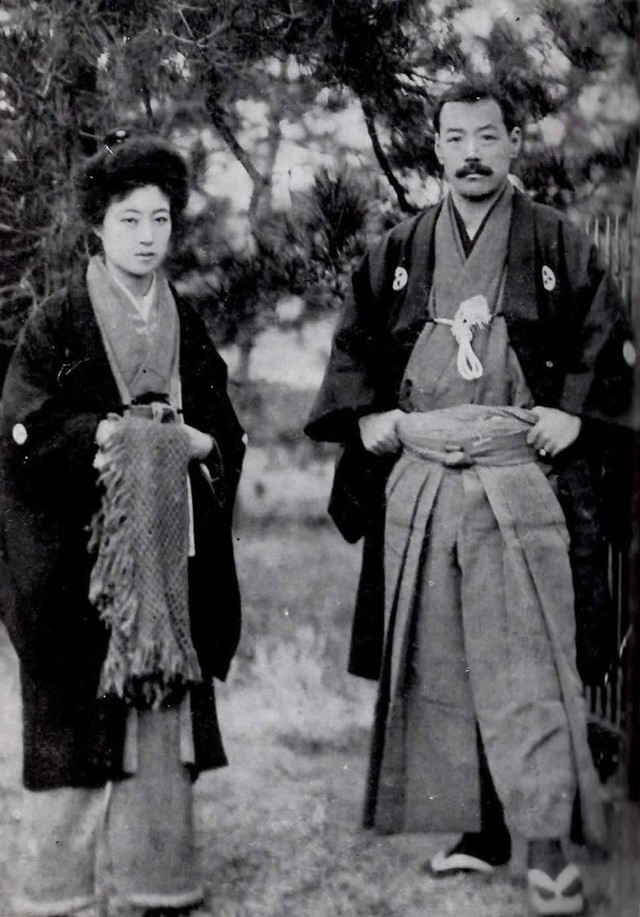
Born into an affluent family, it was a tragic twist of fate that saw Sada Yacco take the path that would lead her to become one of her home country’s most celebrated geisha, with her father passing away when she was only seven and her family then releasing her to an ochaya, or geisha teahouse. Yet from this misfortune, Sada Yacco crafted a remarkable career: so stratospheric was her rise to fame that her virginity was preserved at 15 for none other than the Japanese Prime Minister; although it’s worth noting that this tradition is no longer practised by today’s geisha, and the Western understanding of them as high-class prostitutes is very much a thing of the past. Instinctively ambitious, she was part of a new generation of Japanese women who undertook a full education and also participated in the masculine pastimes of horse riding and billiards before discovering her greatest talent - the art of theatre.
Not only did Sada Yacco’s ambitious new take on traditional forms of Japanese theatre inspire audiences across the globe, but she also became something of an icon in the worlds of beauty and fashion. She released her very own range of cosmetics, inspired by the colour palettes of the geisha - a scheme of red, white and black that still dominates the ad campaigns of Japanese cosmetics brands like Shiseido and SK-II - and even became the namesake of a best-selling perfume by the French house of Guerlain. Following hot on the heels of the premiere of Gilbert and Sullivan’s sell-out show The Mikado, Sada Yacco performed at the 1900 Expo in Paris; swiftly, her lavishly decorated kimonos became a white-hot trend, marking the beginning of a cultural conversation between French fashion and Japan that would be famously continued by designers from Christian Dior in the 1950s all the way up to Nicolas Ghesquière’s samurai-inspired extravaganza for Louis Vuitton’s cruise 2018 collection.
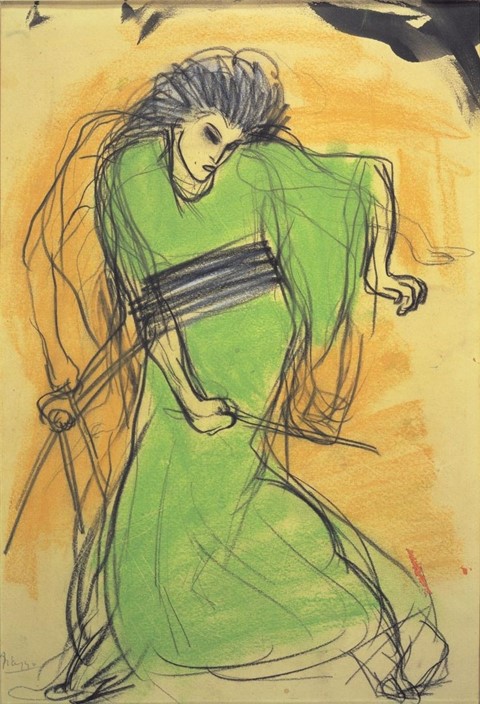
It’s a neat reminder that one of European modernism’s greatest and arguably most under-recognised debts is to the artistic heritage of Japan: where many art historians would have you believe that our way of seeing was radically reshaped by the Cubists or the abstract artists of De Stijl, the flat, decorative surfaces of the early modernists were all directly influenced by the pictorial tradition of Japanese art thanks to the trend for japonisme that swept through belle époque Paris. Visit Claude Monet’s gardens at Giverny, or Henri Matisse’s house museum outside Nice, and you will find Japanese prints as a recurring influence; the minimisation of Japan’s role here probably being a testament to the colonial outlook that still colours much of our understanding of Europe’s cultural history. Sada Yacco was even immortalised by Picasso himself in a series of painting sketches that effortlessly capture her seductive charm.
In many ways, the make-up of the geisha – that most famous and perhaps most misunderstood of all east Asian archetypes - bears many parallels with these broader cultural misconceptions. Where Western art had been largely concerned with naturalism – the idea that the picture frame should exist as a window into another world – the self-aware artificiality of the geisha shares a similar spirit to the highly decorative woodcuts for which Japanese art is so famous. Western make-up largely aims to create an illusion of natural beauty – maybe she’s born with it, maybe it’s Maybelline – whereas the Japanese geiko and maiko who inhabit the teahouses of Kyoto not only acknowledge that falsity but revel in it. The pale sheet of foundation that is laid over their faces deliberately doesn’t extend to the hairline, creating a very different kind of illusion - that of a mask. In Sada’s time, geisha’s used rice powder to create that thick layer of white foundation that was brushed onto the face and neck. The foundation was applied over a base layer mixture of wax and chamomile oil which was warmed up with the hands and used to flatten facial hair and help smooth the blending of the foundation onto the skin. Charcoal was used around the eyes and for eyebrows, while vermillion red was used to paint the lips.

So what are the lessons we can learn from Sada Yacco today? For one, she is a reminder of how east Asian beauty can be easily fetishised, or warped into something that offers only a shallow facsimile of the richness, depth and dignity that lies behind the make-up of the geisha. But most powerful, perhaps, is her unique willingness to bridge cultural divides: in today’s world, where the line between inspiration and appropriation is often blurred, Sada Yacco’s love of her country’s artistic heritage, alongside her willingness to embrace more progressive Western trends in theatre, collectively mark her out as a pioneer - and the weird and wonderful cultural hybrids that came out of that continuing to influence creatives from across the globe today.
It’s this attitude that leads us back, once again, to her unique definition of beauty. Like any of the greatest performers, Sada Yacco was a chameleon: just as comfortable in the get-up of the geisha as she was in the dresses of some of Western theatre’s most iconic characters. A famous image sees the actress dressed in the garb of Shakespeare’s Ophelia, the spurned lover of Hamlet who drowned herself in the reeds of a weeping brook. Her make-up is minimal, with what looks simply like a flick of mascara to emphasise the character’s sadness and to highlight her natural beauty. “Japanese art is to make one as a doll,” she continued in her 1906 interview. “On the American stage we have to show ourselves as living woman.” Somehow, no matter how thickly laid on the geisha cosmetics were, they always felt like a flourish for Sada Yacco. Even if she recognised it as the most important part of her toolkit, she was always more than her make-up.
